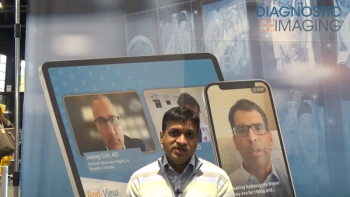
Philips’ approach for DR shifts from promises to practicalities
The promises of digital radiography -- increased productivity and image quality plus decreased cost and radiation dose -- have been well documented. But the process of switching from analog to digital imaging is far more complex than simply exchanging a conventional radiography system for a one with a flat detector. It involves information management, patient flow, and image distribution inside and outside the radiology department.
The promises of digital radiography - increased productivity and image quality plus decreased cost and radiation dose - have been well documented. But the process of switching from analog to digital imaging is far more complex than simply exchanging a conventional radiography system for a one with a flat detector. It involves information management, patient flow, and image distribution inside and outside the radiology department.
So while the growth rate of the DR market has doubled since 2000 and shows no signs of ebbing, vendors are concerned that disgruntled customers may be wondering why they spent three or five times more to buy a DR system and still haven't seen the advantages of filmless radiography.
"There are dissatisfied customers who didn't manage the process properly and don't see the benefits they expected to see after going digital because they may have missed a few steps getting there," said Arne Helbig, international marketing manager for Philips general x-ray.
To solve this problem, Philips Medical Systems has amassed tools to help digital newcomers master the transition, based on the experience of old hands who have done so successfully. The company has published a handbook that provides chapter and verse on going digital and is presenting two symposia a year on the technological and administrative essentials of filmless radiography. Philips also offers a CD with financial models for performing a cost-benefit analysis and determining the breakeven point for DR.
The company's recent agreement with PACS developer Stentor also plays into this emphasis on satisfying digital customers. According to Stan Smits, head of Philips healthcare IT activities, software packages for digital image distribution must be carefully introduced and supported across a hospital's entire imaging network infrastructure, or a lot of pieces of equipment sitting alongside one another will not be able to communicate.
"Stentor has the technology that allows the transmission of images more effectively than other industry solutions that exist," he said. "If you are in an OR, you don't need the full image, only that part of the image that matters. So the network requirements are much smaller, and the PC can be standard and cheaper. We believe with the Stentor solution, we will be able to get better acceptance of the lengthy process of going digital in the hospital."
Philips' practical tools are based on conversations with major customers, particularly Dartmouth-Hitchcock Medical Center in Lebanon, NH. The Administrator's Guide to Digital Radiography describes how hospitals can develop a stable digital environment by integrating DR into an overall institutional strategic planning process - establishing projected patient loads, choosing the right configuration, requesting information from vendors, and simplifying budgeting.
The seminars focus on such issues as managing patient flow and changing dosing requirements, as well as training every radiographer in the institution to feel comfortable working in the digital sphere, Helbig said. One is geared for technologists and the other for administrators.
"The issue is not that customers have to be convinced of the need to go digital when they buy a radiography system today," Helbig said. "Everyone is aware that within the lifetime of a new radiography system, everything around it will be digital anyway, so they will have to think about going digital in the radiography arena. It's really about how do they get to a digital environment in the extremely work-intensive area of radiography, where 50% to 70% of the diagnostic procedures take place."
Newsletter
Stay at the forefront of radiology with the Diagnostic Imaging newsletter, delivering the latest news, clinical insights, and imaging advancements for today’s radiologists.



























